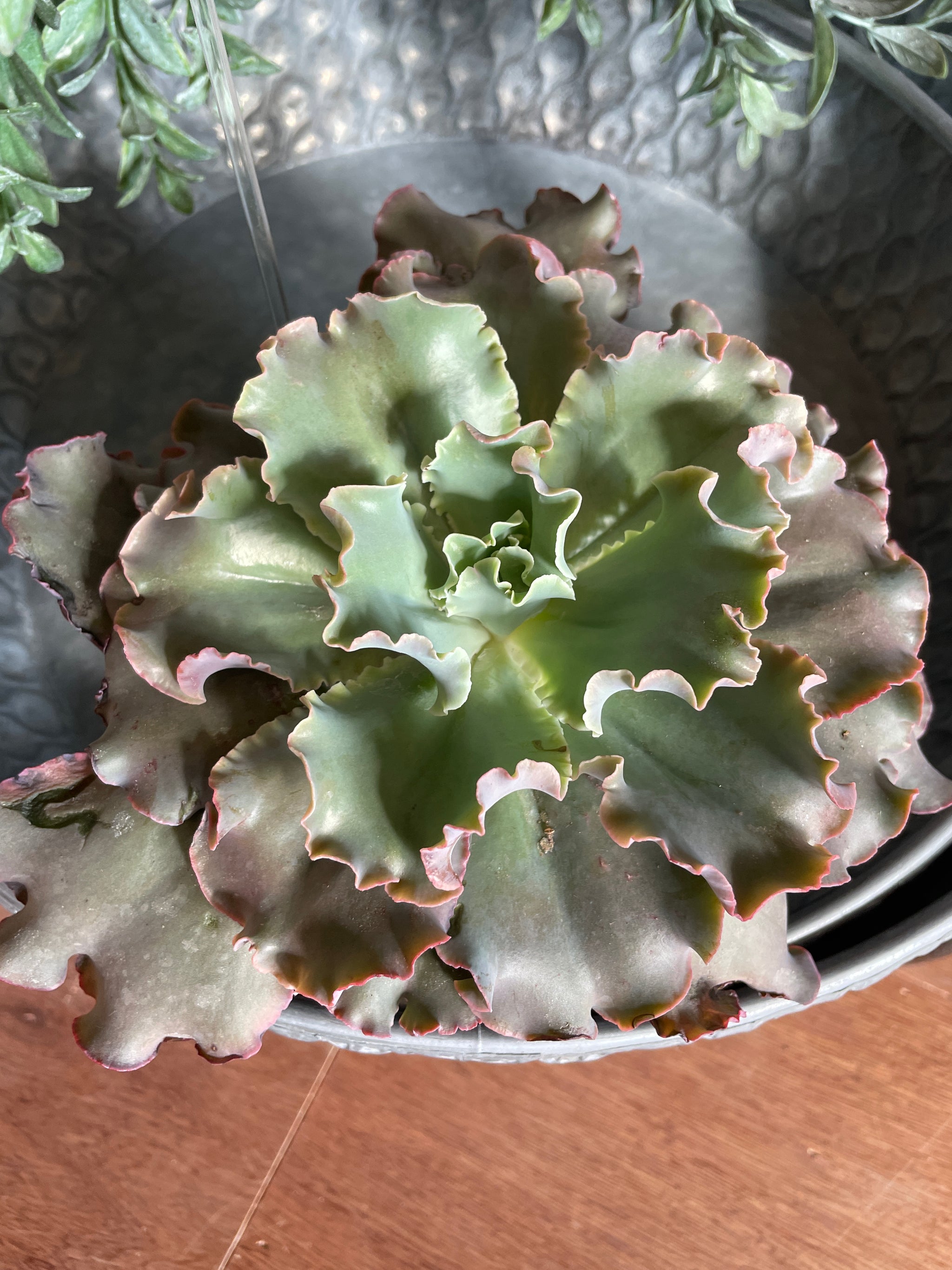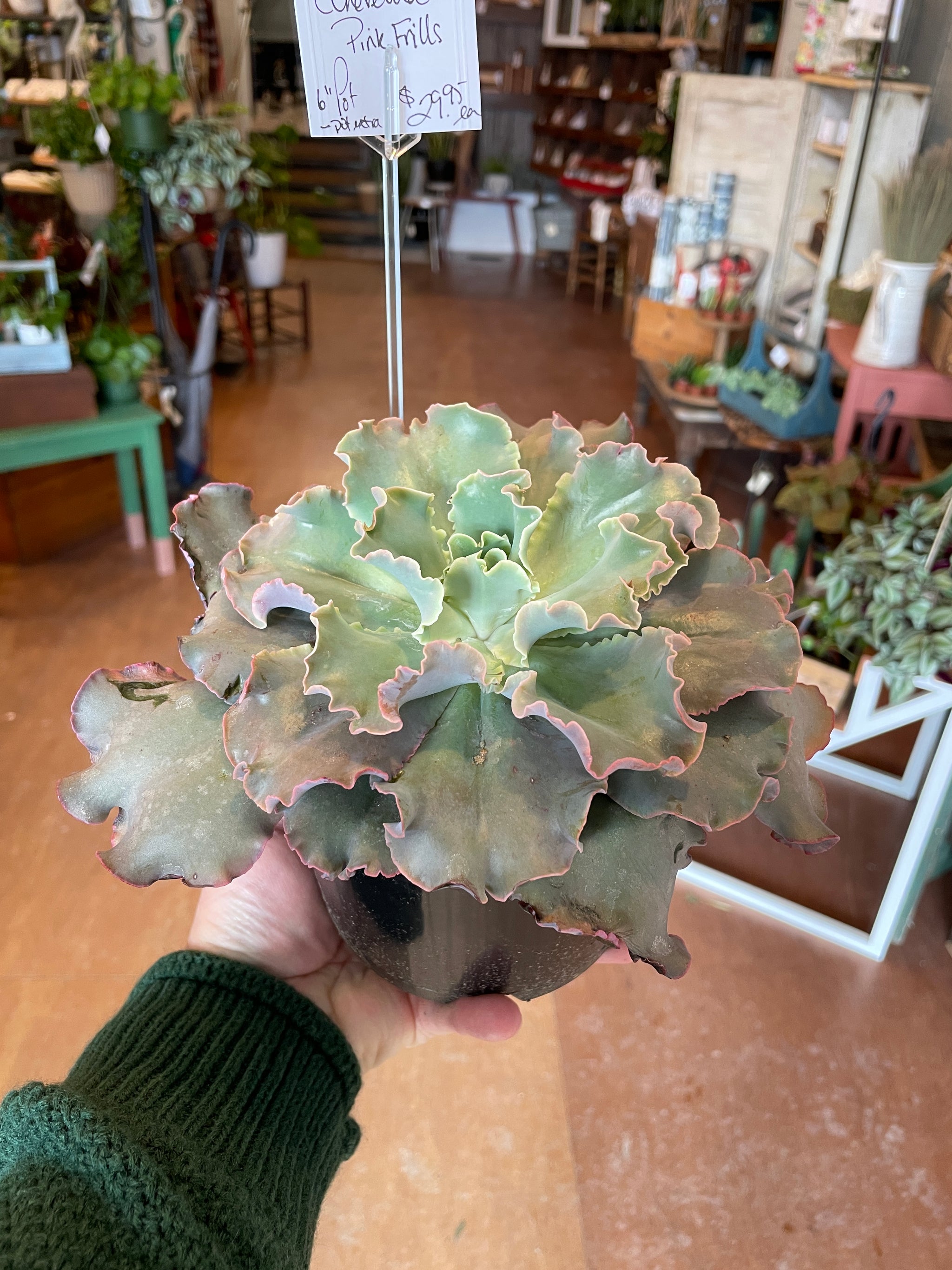Echeveria Pink Frills
$29.95
Echeveria shaviana 'Pink Frills' is a beautiful succulent plant that forms a central rosette surrounded by numerous offsets. The rosettes can grow up to 8 inches (20 cm) in diameter. The leaves have brighter colors than the species, ranging from mauve purple and silvery blue to green, with bright pink edges that become frilly as they age. They are fleshy, spoon-shaped, pointed, and can reach up to 5 inches (12.5 cm) in length.
The orange-pink, bell-shaped flowers appear on arching stalks in summer.
How to Grow and Care
Most common Echeveria species are not complicated succulents to grow, provided you follow a few basic rules. First, be careful never to let water sit in the rosette as it can cause rot or fungal diseases that will kill the plant. Additionally, remove dead leaves from the bottom of the plant as it grows. These dead leaves provide a haven for pests, and Echeverias are susceptible to mealy bugs. Finally, as with all succulents, careful watering habits and plenty of light will help ensure success.
Most Echeveria can be easily propagated from leaf cuttings, although a few are better from seeds or stem cuttings. To propagate a leaf cutting, place the individual leaf in a succulent or cacti mix and cover the dish until the new plant sprouts.
Repot as needed, preferably during the warm season. To repot a succulent, ensure the soil is dry before repotting, then gently remove the pot. Knock away the old soil from the roots, removing any rotted or dead roots. Treat any cuts with a fungicide.
General Care for Echeveria
Watering
When and how to water is a crucial part of Echeveria care. They do not like to be kept too wet, but they also do not like to be kept too dry. Wrinkled leaves indicate the plant needs more water. Provide moderate amounts of water from spring to fall. The "soak and dry" method is the preferred schedule for watering Echeverias. Let the soil dry out before you water again. If you have saucers under the pots, make sure after a short time to empty the water. During winter, water your Echeverias just enough to keep the plants from shriveling.
Fertilizing
Echeverias grow well without fertilizer but may benefit from the extra nutrients. Use a slow-release fertilizer in spring or a liquid fertilizer diluted 2 to 4 times more than usual and used less often than recommended. Remember that it is easier to overfertilize Echeverias than to underfertilize.
Repotting
Repot your plants only as needed during spring or early summer when they are actively growing. To repot an Echeveria, make sure the soil is dry before repotting. Take your plant out of its current pot and remove the old soil from the roots. Place the plant in a new pot with fresh potting soil. Wait at least a week after repotting to water your Echeveria to reduce the risk of root rot.
Pruning
Echeveria is self-pruning. All you may need to do is pick out the dead leaves or flowers. Picking out the dead leaves prevents rot or disease from taking over the plant.
How to Propagate Echeveria
Echeverias are one of the easiest succulents to propagate. They are usually propagated by offsets or leaves, but they can also be grown from stem cuttings and seeds. The best time to separate offsets and take cuttings is in the spring.



